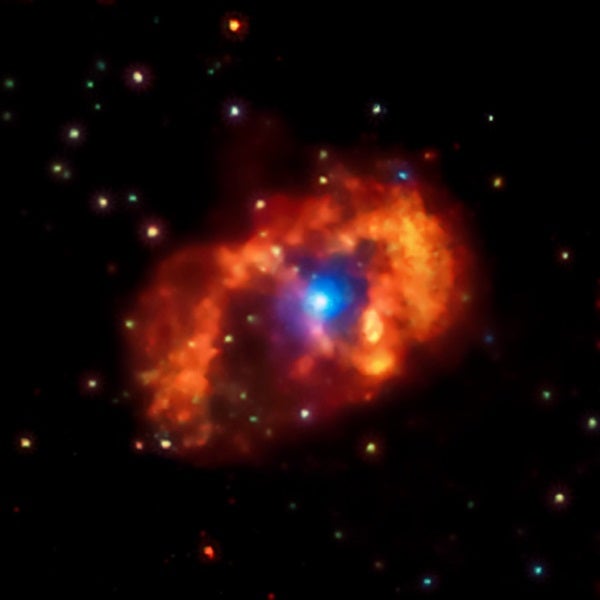The system has already given astronomers a preview. Between 1838 and 1845, Eta Carinae underwent a period of unusual variability during which it briefly became the second-brightest star in the sky. During this event, which astronomers call the Great Eruption, the star shot a gaseous shell into space that contained at least 10 times the Sun’s mass. A much smaller ejection took place in the 1890s. While a convincing explanation of these events remains elusive, LBVs and other stellar types are capable of impressive eruptions — sometimes called supernova impostors — that leave the star intact.
Unfortunately, the nebula created by the Great Eruption, the brilliance of the primary star, and the short 5.54-year period of the binary’s eccentric orbit make it difficult for astronomers to sort out what’s happening there. Ted Gull and Thomas Madura at NASA’s Goddard Space Flight Center in Greenbelt, Maryland, suspect that the binary’s closest approach, comparable to the average distance between the Sun and Mars, may lead to instabilities that make eruptions — and possibly the supernova — more likely. “We simply do not have models of evolved stars that can confidently predict what and when the outcome might be, which is why it is important to understand what happened in the 1840s and the 1890s,” says Gull.
Many aspects of the system remain poorly established. The secondary may be a main-sequence O star (the hottest type), a giant, or a Wolf-Rayet star, different evolutionary phases that would affect the timing of its supernova. “We also don’t know the exact radii of the stars or the precise orbital eccentricity, so if conditions were just right, the two stars could collide, or merge and explode, which would be quite spectacular,” Madura explains.
Assuming the primary star exploded long enough ago that the supernova’s light begins washing over Earth tonight, what might we see? The supernova shock wave would plow through the debris of previous eruptions, resulting in a type IIn supernova. At its distance of about 7,500 light-years, Eta Carinae may exceed a visual magnitude of –7, much brighter than Venus and easily visible during the day. This would rival SN 1006, the brightest supernova in recorded history.
Yet because the stars remain shrouded in mystery, so does the timing of any terminal explosion. “I would not say Eta Carinae is an immediate supernova progenitor — we have no evidence for that,” says Norbert Langer at the University of Bonn. “But we also cannot exclude it.”










